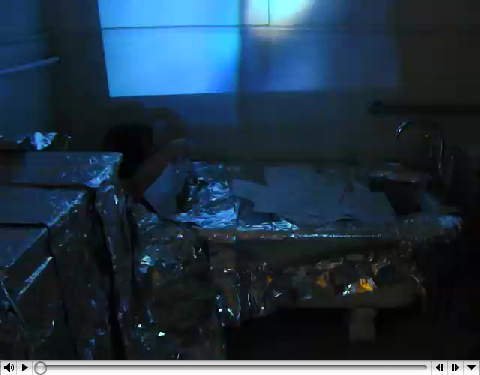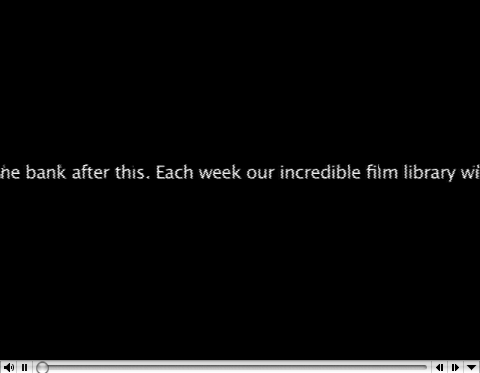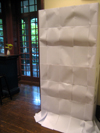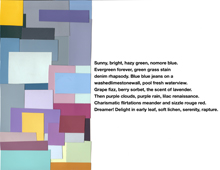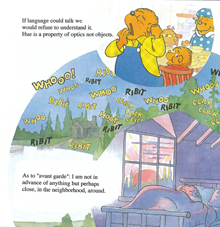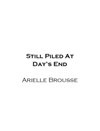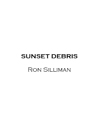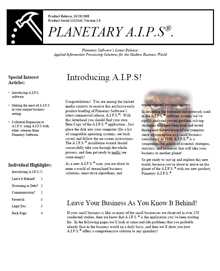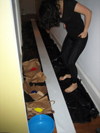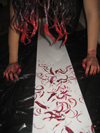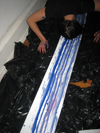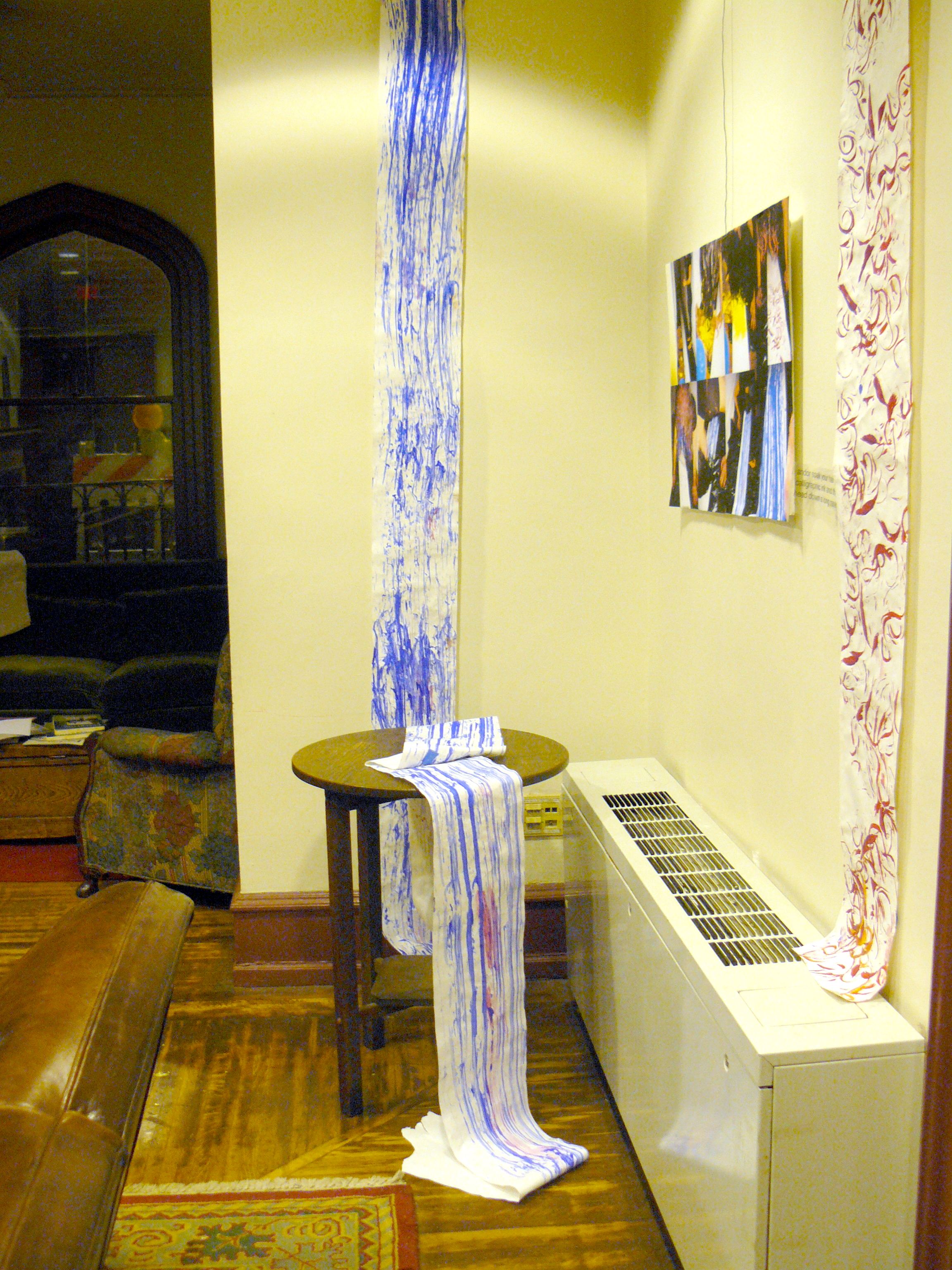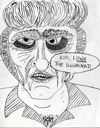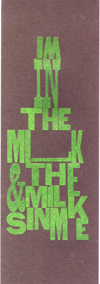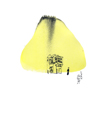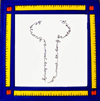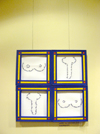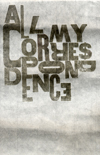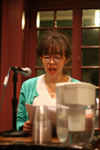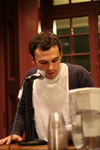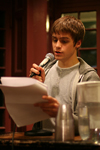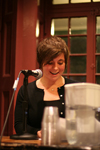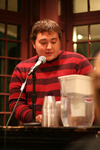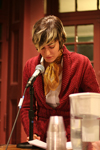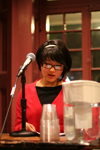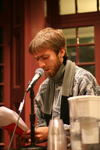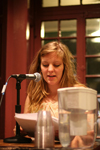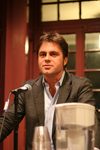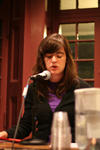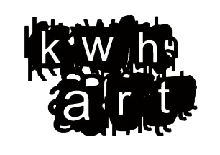KWH Art
Tapeworm:
A collaborative exhibition based on
The Tapeworm Foundry: andor the dangerous prevalence of imagination
by Darren Wershler-Henry
November 20, 2008 - January 25, 2009
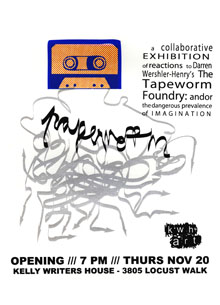
The Tapeworm Foundry is a quintessential piece of conceptual writing, faithfully formulaic yet unusually compelling in its fruition: a single rambling, unpunctuated sequence of possible projects ranging from quirky pipe dreams to allusions to the 20th century artistic and literary avant-garde. Artists participating in the exhibition created work responding to these charges, from "detourn a book about the berenstain bears by replacing all text with material from a poetics by charles bernstein" to "mount an art show displaying graffiti covered panels detached from public washroom stalls." The opening included live renditions of excerpts from Tapeworm by the artists and author Darren Wershler-Henry.
Works
Cecilia Corrigan
andor stage a reading in a bathroom stall
Artie Vierkant
andor dictate via conference call the instructions for the assembly of an artwork and then display the results as a group show
The piece documents the development of an organic network amongst a group via structure imposed individually on each by physically displaced actors. Participants are placed in a room with access to paper, writing instruments, personal computers and text message-enabled cell phones. They are dictated instructions written by external actors according to a time-based algorithm decontextualized from a major social event: the 2008 election projections of four different media outlets. Each numerical value relates to a different simple task or provocation -- written by an anonymous group contracted over the internet, the artist and Darren Wershler-Henry -- which participants enact until they are fed a new task (in relational real time, as the projected returns change). Taking cues from Oliver Herring's Task, Trisha Brown's exploration of structure and the commonplace, Oulipo, and John Conway's Game of Life, these instructions create an architecture for emergent behavior through the complex interactions of simple rules.
John Carroll
andor dial a number at random and then finagle your way into reading poems to the person who answers
- Track 01
- Track 02
- Track 03
- Track 04
- Track 05
- Track 06
- Track 07
- Track 08
- Track 09
- Track 10
- Track 11
- Track 12
- Track 13
- Track 14
- Track 15
- Track 16
- Track 17
- Track 18
- Track 19
- Track 20
- Track 21
- Track 22
- Track 23
- Track 24
- Track 25
- Track 26
- Track 27
- Track 28
- Track 29
- Track 30
- Track 31
- Track 32
- Track 33
Jamie-Lee Josselyn
andor write down the first sentence spoken on television when the set is turned on and then change the channel in order to write down the next sentence and so on
Jamie-Lee Josselyn and John Carroll
andor select a bookcase full of books and then measure the limits of the bookcase and then count the books and then take the first book and then count the number of periods on the first full page of type and then multiply that number by all the pages int eh book and then record the title and the approximate number of periods in each book and then total all the periods in the entire bookcase
Grace Ambrose
andor write a poem using only the names of paint swatches from a hardware store and then arrange the colours syntactically
Arielle Brousse
andor detourne a book about the berenstain bears by replacing all text with material from a poetics by charles bernstein
andor write a poem answering in order of occurrence all of the questions posed by rone silliman in sunset debris
Ned Eisenberg
andor start a pataphysical software company
Kimberly Eisler
andor soak your hair in japanese calligraphic ink and then drag your head down a long paper scroll
Thomson Guster
andor posit a novel in which a time traveller first appears at the denouement and then proceeds backwards to the beginning through a series of non sequiturs
Sofie Hodara
andor luxuriate in the way everything rubs up against everything else
Joyce Lee
andor do concrete poems in needlepoint
Robin McDowell
andor make a huge paper boat from all your correspondence and then climb aboard to sail away
Brooke Palmieri
andor make famous poems more efficient by abstracting them into commercial catchphrases so that for paradise lost by milton you might say ive fallen and i cant get up
 Further abstracting Milton's canonical "Paradise Lost" from its ten magisterial books (the literary establishment's required reading for cogent conversation at your next
cocktail party, trolley ride, or Job Talk), this experiment posits a sociological theory of reading in just moments! In three easy steps tackle all forms of "literature"!
Simply open up your gmail account, email yourself the title of the desired work, and consult the "Sponsored Links" column on the right-hand extremity of your browser window
for a list of slogans distilling your text into its essential historical, anthropological, and literary merits.
Further abstracting Milton's canonical "Paradise Lost" from its ten magisterial books (the literary establishment's required reading for cogent conversation at your next
cocktail party, trolley ride, or Job Talk), this experiment posits a sociological theory of reading in just moments! In three easy steps tackle all forms of "literature"!
Simply open up your gmail account, email yourself the title of the desired work, and consult the "Sponsored Links" column on the right-hand extremity of your browser window
for a list of slogans distilling your text into its essential historical, anthropological, and literary merits.

